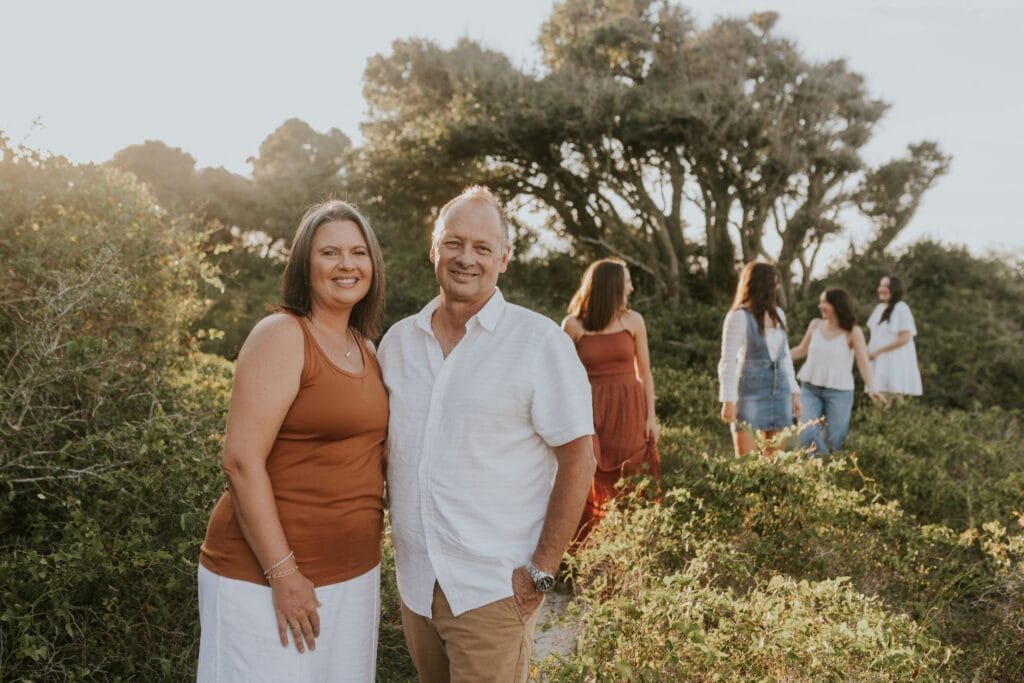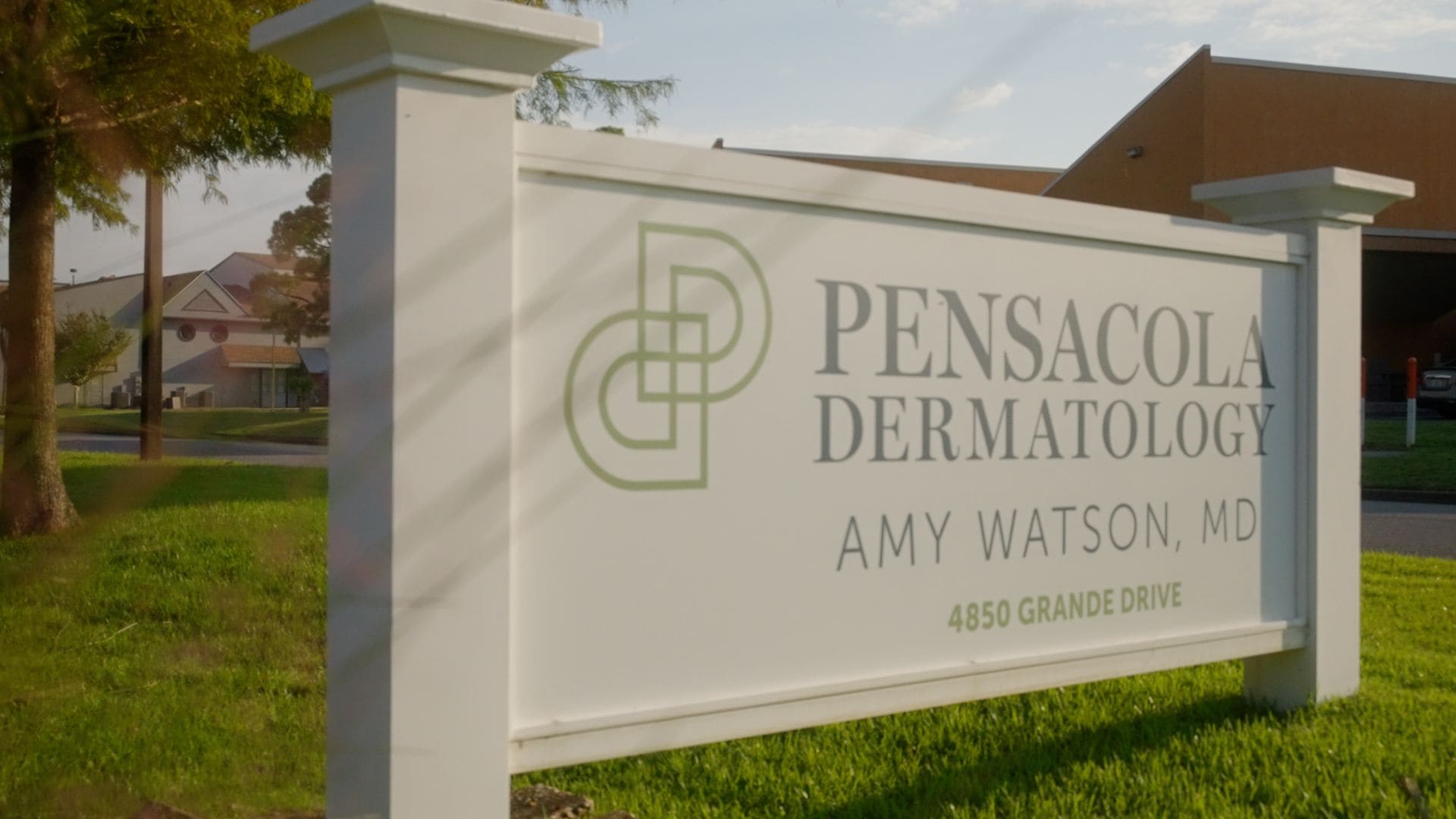Acne
Acne is the most common skin condition in the U.S., affecting millions of people annually. While often associated with adolescence, acne can affect individuals of all ages, including adults. Understanding its causes, how it manifests, and the available treatments can help you achieve clearer, healthier skin.
What Causes Acne?
Acne occurs when hair follicles become clogged with oil (sebum) and dead skin cells. This blockage can lead to a variety of blemishes, including blackheads, whiteheads, pimples, or even deeper, painful cysts. Factors that contribute to acne include:
- Excess Oil Production: Overactive oil glands can clog pores and lead to breakouts.
- Hormonal Changes: Hormonal fluctuations, particularly during puberty, pregnancy, or menstruation, can trigger or worsen acne.
- Genetics: Family history plays a significant role. If your parents had acne, you’re more likely to develop it.
- Diet: Certain foods, especially those high in sugar or dairy, may aggravate acne in some individuals.
- Stress and Lifestyle: Stress can worsen acne, and external factors like makeup, hair care products, or even sports equipment can cause or exacerbate breakouts.
Types of Acne
Acne manifests in various forms, including:
- Blackheads and Whiteheads: These are non-inflammatory types of acne caused by clogged pores.
- Papules and Pustules: Red, inflamed bumps, with pustules containing pus.
- Nodules and Cysts: Severe, deep acne that can be painful and may lead to scarring.

Effective Treatment Options
The good news is that acne is treatable, and most individuals can see clearer skin with proper care. Depending on the severity of your acne, treatments may include:
- Topical Treatments: These include over-the-counter retinoids, benzoyl peroxide, or salicylic acid to unclog pores and reduce bacteria. Prescription-strength retinoids may be recommended for more stubborn acne.
- Oral Medications: Antibiotics, hormonal therapy (such as birth control pills), and isotretinoin are prescribed for moderate to severe acne. Isotretinoin is reserved for cases that don’t respond to other treatments due to its potency and side effects.
- Lifestyle Adjustments: Gentle skincare routines, avoiding pore-clogging products, and reducing stress can help manage acne. Diet modifications, such as reducing dairy or sugary foods, may also alleviate symptoms.
Acne Scarring & Prevention
Preventing acne scars involves early and consistent treatment to reduce inflammation and prevent the formation of deeper cysts or nodules. Dermatologists may use treatments like chemical peels and microneedling to minimize scarring once acne is under control.
At Pensacola Dermatology, we provide customized treatment plans for acne based on your skin type, lifestyle, and the severity of your condition. Whether you’re dealing with mild breakouts or severe, persistent acne, our board-certified dermatologists are here to help you achieve clearer, healthier skin. Contact us to request a consultation and take the first step toward managing your acne.

Psoriasis
Psoriasis is a chronic autoimmune condition that affects the skin, causing it to produce new cells at a faster rate than usual. This rapid turnover leads to the buildup of thick, scaly patches on the skin, commonly known as plaques. These patches can vary in size and often appear on the scalp, elbows, knees, and lower back, but psoriasis can affect any part of the body, including nails and joints. It’s not contagious, meaning it cannot be spread from person to person.
What Causes Psoriasis?
The exact cause of psoriasis isn’t fully understood, but it is known to involve both genetic and environmental factors. Genetics plays a key role, as psoriasis tends to run in families. If a close relative has psoriasis, your chances of developing the condition are higher. Environmental triggers can also play a significant role in causing flare-ups. Some common triggers include:
- Stress
- Infections, such as strep throat
- Skin injuries, like cuts or sunburn
- Certain medications, such as lithium or beta-blockers
- Cold, dry weather
Managing these triggers can help reduce the frequency and severity of psoriasis outbreaks.
Types of Psoriasis
There are several types of psoriasis, with plaque psoriasis being the most common. This type causes raised, red patches covered with a silvery white buildup of dead skin cells. Other types include:
- Guttate psoriasis, often triggered by infections and characterized by small, dot-like lesions.
- Inverse psoriasis, which forms in skin folds and is often red and shiny.
- Pustular psoriasis, a more severe form that can lead to pus-filled blisters.

Diagnosis & Treatment
To diagnose psoriasis, a dermatologist examines the skin and may conduct a skin biopsy to rule out other conditions. Treatment for psoriasis depends on the type and severity of the disease and can include:
- Topical Treatments: Corticosteroids, vitamin D analogs, and retinoids are commonly prescribed to reduce inflammation and slow the growth of skin cells.
- Phototherapy: Light therapy is used to slow skin cell turnover and reduce scaling and inflammation.
- Systemic Treatments: For more severe cases, medications that work throughout the body, such as biologics, PDE 4 inhibitors, and JAK inhibitors, may be prescribed to target specific parts of the immune system responsible for rapid skin cell production.
Managing Psoriasis
While there is no cure for psoriasis, many patients can achieve significant relief through treatment. Lifestyle changes, such as moisturizing regularly, managing stress, and avoiding known triggers, can help prevent flare-ups. Staying consistent with a dermatologist’s prescribed treatment plan is crucial for managing symptoms and improving skin health.
At Pensacola Dermatology, we offer personalized treatment plans for psoriasis, designed to address both the physical and emotional impact of this condition. If you or a loved one are struggling with psoriasis, contact us today to request an appointment and explore treatment options tailored to your needs.

Rosacea
Rosacea is a common, chronic skin condition that primarily affects the face, causing symptoms such as facial redness, visible blood vessels, and acne-like breakouts. Though often mistaken for acne or sunburn, rosacea differs in its triggers, appearance, and treatment needs. It can vary in severity and affect other parts of the body, including the eyes (ocular rosacea), leading to irritation and dryness.
Symptoms of Rosacea
Rosacea commonly manifests as:
- Flushing and Persistent Redness: A characteristic symptom where the central face, particularly the cheeks, nose, and forehead, becomes red or develops a warm sensation.
- Visible Blood Vessels: Small, dilated blood vessels (telangiectasia) can appear on the skin’s surface, especially on lighter skin tones.
- Acne-Like Bumps: While resembling acne, these breakouts are distinct and can include both red bumps (papules) and pus-filled bumps (pustules).
- Thickened Skin: In severe cases, the skin, particularly on the nose, can thicken and become bumpy (a condition known as rhinophyma).
- Eye Irritation: Ocular rosacea can cause red, dry, and irritated eyes.
Causes & Triggers
While the exact cause of rosacea remains unclear, researchers believe it involves a combination of genetic predisposition and environmental triggers that lead to an inflammatory response in the skin. Common triggers include:
- Sun exposure
- Hot or spicy foods
- Alcohol consumption
- Emotional stress
- Extreme temperatures
These triggers can exacerbate symptoms and lead to flare-ups, so managing them is key to controlling rosacea.
Treatment Options
There is no cure for rosacea, but various treatment options can effectively manage the symptoms. Treatment plans are customized based on the severity of the condition and often include:
- Topical Treatments: Medications such as metronidazole and azelaic acid are applied directly to the skin to reduce redness and inflammation.
- Oral Medications: Antibiotics like doxycycline can help manage inflammation, particularly for those with more persistent symptoms or ocular rosacea.
- Lifestyle Modifications: Identifying and avoiding triggers is essential. Patients are advised to use sunscreen regularly, adopt a gentle skincare routine, and manage stress effectively.
At Pensacola Dermatology, we provide personalized care plans to help you manage your rosacea. Our board-certified dermatologists use the latest treatments, including medications and practical lifestyle advice, to help control flare-ups and improve your skin’s health. If you suspect you have rosacea or need help managing your symptoms, request a consultation with us today.

Eczema
Eczema, also known as atopic dermatitis, is a chronic skin condition that causes dry, itchy, and inflamed skin. It is most commonly seen in children but can occur at any age. Eczema is not contagious, but it can significantly impact the quality of life due to discomfort and visible skin changes.
Types of Eczema
Eczema encompasses several different forms, including:
- Atopic Dermatitis: The most common type, characterized by itchy, dry patches on the skin.
- Contact Dermatitis: Occurs when the skin comes into contact with an allergen or irritant, resulting in a rash.
- Dyshidrotic Eczema: Involves small, itchy blisters on the hands and feet.
- Nummular Eczema: Round, coin-shaped spots form on the skin, often triggered by dry skin or skin trauma.
- Stasis Dermatitis: Usually affects the lower legs and is related to poor blood flow.
Causes of Eczema
The exact cause of eczema is unknown, but it is thought to result from a combination of genetic and environmental factors. People with eczema have a sensitive immune system, and their skin barrier is less effective at retaining moisture and protecting against irritants. Common triggers include:
- Environmental Factors: Extreme temperatures, allergens like pollen or pet dander, and irritants like soaps or certain fabrics.
- Stress: Emotional stress can worsen eczema symptoms.
- Food Allergies: In some children, certain foods like dairy or nuts can trigger flare-ups.

Managing & Treating Eczema
While there is no cure for eczema, symptoms can be effectively managed through:
- Moisturizing: Regular use of emollients helps to hydrate the skin and prevent flare-ups.
- Topical Treatments: Corticosteroids, calcineurin inhibitors, and topical JAK inhibitors are commonly used to reduce inflammation and itching.
- Phototherapy: Light therapy may be recommended for severe cases to reduce inflammation.
- Systemic Treatments: For more severe cases, medications that work throughout the body, such as biologics and JAK inhibitors, may be prescribed to target specific parts of the immune system.
- Avoiding Triggers: Identifying and avoiding specific triggers like harsh soaps, detergents, and allergens can prevent flare-ups.
At Pensacola Dermatology, our board-certified dermatologists provide personalized treatment plans to help manage eczema effectively, improve skin health, and reduce flare-ups. We work with each patient to identify triggers and offer the latest treatments, including both topical therapies and advanced options like phototherapy.
If you or a loved one are struggling with eczema, request an appointment with us to learn more about how we can help you achieve healthier, more comfortable skin.

Skin Allergies
Skin allergies occur when your immune system reacts to a substance that it sees as harmful, even though it might be harmless to others. This reaction can result in rashes, itching, redness, swelling, and sometimes even blistering. Several common types of skin allergies include contact dermatitis, hives (urticaria), and eczema.
Common Causes of Skin Allergies
- Contact Dermatitis: This occurs when your skin comes into contact with an allergen or irritant, such as metals, cosmetics, soaps, or plants like poison ivy. It often results in a rash that can itch, blister, or become inflamed. If you can identify and avoid the trigger, the rash typically resolves on its own, but patch testing can help identify the allergen if it’s difficult to determine.
- Hives: Also known as urticaria, hives are red, itchy welts that can appear anywhere on the body. They may be triggered by food, insect bites, medications, or even stress. While most hives go away on their own, chronic hives can persist for weeks or months, requiring professional treatment to manage symptoms.
- Eczema (Atopic Dermatitis): Eczema is often linked to allergies and asthma. It causes dry, itchy, and inflamed skin, and can flare up due to allergens like dust mites, pollen, or certain foods. Managing eczema involves using moisturizers, identifying triggers, and sometimes prescription treatments.
Diagnosis & Treatment
For persistent or unexplained allergic reactions, patch testing can be a useful diagnostic tool. During patch testing, small amounts of various allergens are applied to the skin under patches to see if any reaction occurs. This method helps identify delayed skin reactions to allergens. Once the allergen is identified, your dermatologist can recommend treatment options, which may include antihistamines, corticosteroids, or avoidance of the allergen.
Patch Testing for Skin Allergies
At Pensacola Dermatology, we specialize in patch testing to accurately diagnose skin allergies, especially for patients dealing with persistent rashes or irritations. Dr. Watson, a 20+ year member of the American Contact Dermatitis Society (ACDS), brings extensive expertise in identifying allergic reactions through this advanced method. She uses the 80 Allergen Core American Contact Dermatitis series, which is designed to screen for the most common allergens found across North America.
Patch testing involves applying small amounts of potential allergens to your skin to observe if any reactions occur over time. This helps pinpoint the substances causing your skin issues. After a positive test, patients are given access to the Contact Allergen Management Program (CAMP) database, an exclusive resource for ACDS members. The CAMP database provides patients with a personalized list of products that are free from their identified allergens, making it easier to avoid future reactions. This educational tool is invaluable for anyone managing skin allergies and helps streamline treatment plans.
Dr. Watson has long been a leader in offering this specialized service, being one of the few dermatologists in the region with access to this comprehensive patch testing. With her experience and the innovative tools at our disposal, you can confidently manage your skin health.
At Pensacola Dermatology, we offer specialized skin allergy testing and treatment plans tailored to your individual needs. Whether you’re dealing with hives, eczema, or contact dermatitis, our board-certified dermatologists can help you identify triggers and manage your skin health effectively.

Lumps, Bumps, & Moles
At Pensacola Dermatology, we understand that changes in your skin, like lumps, bumps, or moles, can be concerning. These common skin growths may vary in appearance and cause, ranging from completely benign to more serious conditions that require medical attention. Identifying and understanding the nature of these changes is essential for maintaining healthy skin.
Common Types of Lumps & Bumps
- Cysts: These are closed sacs filled with fluid, pus, or other material that can form under the skin. While typically harmless, cysts can become uncomfortable or infected, requiring medical treatment.
- Lipomas: A lipoma is a soft, fatty lump that forms beneath the skin. They are generally benign and slow-growing, causing little to no discomfort unless they press on nerves or become large.
- Warts: Caused by the human papillomavirus (HPV), warts are small, rough bumps that can appear anywhere on the body. While they are typically harmless, warts can be bothersome or spread to other areas.
- Dermatofibromas: These small, firm bumps usually develop after a minor skin injury. Dermatofibromas are benign but may cause some tenderness, especially when pressed.
Moles: What to Watch For
Moles, or nevi, are common skin growths that most people have. They can appear anywhere on the body and are generally harmless. However, it’s important to monitor moles for any changes, as they can occasionally indicate the presence of skin cancer, including melanoma. Signs to look for in a mole include:
- Asymmetry: One half of the mole does not match the other.
- Border irregularity: The edges of the mole are ragged or blurred.
- Color changes: The mole has multiple colors or shades.
- Diameter: The mole is larger than 6mm (about the size of a pencil eraser).
- Evolving: The mole changes in size, shape, or color over time.
If you notice any of these signs, it’s important to consult with a dermatologist for further evaluation.
When to See a Dermatologist
While many lumps, bumps, and moles are benign, it’s crucial to see a dermatologist for a professional evaluation, especially if you notice any rapid changes, discomfort, or new growths. At Pensacola Dermatology, we provide comprehensive skin examinations to assess any unusual or concerning spots, ensuring that any potentially harmful conditions are diagnosed early.
Our experienced team, led by board-certified dermatologists, will help determine whether your lump, bump, or mole requires treatment, removal, or monitoring over time. Whether it’s a cosmetic concern or a medical issue, we are here to provide the right care and treatment for your skin health.
If you have concerns about a mole or skin growth, contact Pensacola Dermatology today to request a consultation and get expert advice on the next steps for your skin care.

Birthmarks
Birthmarks are skin abnormalities that appear at birth or shortly after. They can vary in size, shape, color, and texture. While most birthmarks are harmless, some may require medical attention, especially if they change in appearance over time or are linked to underlying health conditions. At Pensacola Dermatology, we offer expert evaluation and treatment options for various types of birthmarks.
Types of Birthmarks
Pigmented Birthmarks
These birthmarks result from an overproduction of pigment in the skin. Common types include:
- Café-Au-Lait Spots: Light brown patches that can appear anywhere on the body. While typically harmless, multiple café-au-lait spots may be associated with certain genetic conditions.
- Mongolian Spots: Bluish-gray spots, often found on the lower back or buttocks of babies with darker skin tones. These usually fade as the child grows.
- Moles (congenital nevi): Moles present at birth can vary in size and may increase in size over time. Large congenital moles should be monitored closely, as they may carry a slightly higher risk of developing into skin cancer.
Vascular Birthmarks
These are caused by abnormal blood vessels and are usually red, pink, or purple in color. Types include:
- Port-Wine Stains: These are flat, pink, or red marks that often appear on the face or neck and may darken over time. They are caused by swollen blood vessels and may require treatment, especially if they affect certain areas like the eyes or are associated with other conditions.
- Hemangiomas: Often called “strawberry marks,” hemangiomas are raised, red birthmarks that typically appear in the first few weeks of life. They often grow quickly but may shrink and fade as the child gets older.
- Salmon Patches: Also known as “stork bites” or “angel kisses,” these flat, pink, or red marks are common in newborns. They are usually found on the forehead, eyelids, or back of the neck and tend to fade over time.
Monitoring & Treatment
Most birthmarks are benign and require no treatment. However, some birthmarks, especially larger or rapidly changing ones, should be monitored by a dermatologist. Treatment may be recommended for cosmetic reasons or if the birthmark poses a health risk. Common treatment options include:
- Surgical Removal: Large or suspicious moles may be surgically removed to prevent complications or for cosmetic purposes.
- Medications: Certain medications, such as beta-blockers, can help reduce the size of hemangiomas in infants.
When to See a Dermatologist
If you or your child has a birthmark that changes in size, shape, or color, it’s important to have it evaluated by a dermatologist. At Pensacola Dermatology, our experienced dermatologists provide thorough evaluations to determine whether a birthmark requires treatment or regular monitoring. We are here to offer personalized care to help you make informed decisions about your skin health.

Warts & Molluscum
Warts and molluscum are common skin conditions caused by viral infections. While both are generally benign, they can be bothersome and contagious. At Pensacola Dermatology, we offer effective treatments to help manage these conditions and prevent their spread.
What Are Warts?
Warts are non-cancerous skin growths caused by the human papillomavirus (HPV). They can appear anywhere on the body and are most common on the hands, feet, and face. The virus enters the skin through small cuts or abrasions, leading to the development of these raised, rough-textured bumps.
Types of Warts
- Common Warts: Typically appear on the hands or fingers and have a rough, grainy surface.
- Plantar Warts: Found on the soles of the feet, these warts may feel like you are walking on pebbles due to their inward growth.
- Flat Warts: Smoother and smaller, flat warts often appear on the face or legs in clusters.
- Filiform Warts: These warts are long and narrow and tend to grow around the mouth, nose, or eyes.
What Is Molluscum?
Molluscum contagiosum is another viral skin infection, but it is caused by a poxvirus. It leads to small, firm, dome-shaped bumps that often have a central dimple. Molluscum is most common in children but can also affect adults, particularly those with weakened immune systems or those who have skin-to-skin contact with someone infected.
How Do Warts & Molluscum Spread?
Both warts and molluscum are highly contagious and can spread through direct contact or contaminated surfaces. Warts can spread by touching, shaving, or picking at them. Molluscum is transmitted through skin-to-skin contact or shared items like towels, clothing, or sports equipment.
Treatment Options
While warts and molluscum often clear up on their own, treatment is recommended to speed up the process and reduce the risk of spreading. At Pensacola Dermatology, we offer a variety of treatment options based on the type and location of the lesions, as well as the patient’s overall health and preferences.
- Cryotherapy: This is a common treatment for warts where liquid nitrogen is used to freeze and destroy the abnormal tissue. This method is effective and requires minimal recovery time.
- Topical Medications: Over-the-counter or prescription creams can help remove warts or molluscum. Ingredients such as salicylic acid are commonly used to peel away infected skin gradually.
- Curettage: For molluscum, a dermatologist may use a curette to scrape away the lesions. This method can remove the growths effectively, especially in larger outbreaks.
When to See a Dermatologist
If you have warts or molluscum that persist, spread, or cause discomfort, it’s important to consult a dermatologist. Treatment can prevent further complications, like secondary infections, and reduce the chances of transmission to others. At Pensacola Dermatology, we provide personalized care to treat these common skin infections, ensuring the best outcomes for your skin health.
For more information or to request an appointment, contact Pensacola Dermatology today. We are here to help you manage your skin conditions with expert care and effective treatment options.


